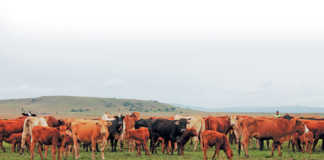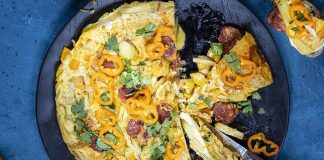
Photo: Supplied
With guava wilt disease (GWD) having almost obliterated the guava industry in the rest of South Africa, production is set to grow substantially in the Western Cape, which is still free from this highly contagious fungal disease.
Whether farmers take this opportunity to produce guavas will greatly depend on whether the fruit can compete with others.
Jacques Jordaan, CEO of the Guava Producers’ Association, explained at the association’s annual general meeting last year that guava orchards were relatively cheap to establish in comparison with others, and could last substantially longer (up to a century, according to some).
However, the market is cyclical, with great ups and downs, and margins are generally not that large, as approximately 70% of all guavas end up on the juicing market, which doesn’t justify the high cost of labour.
“Finding ways to divert more fruit to the fresh market, which accounts for about 24% of the fruit, will make guava production more financially viable,” says Jordaan.
To help facilitate this shift, the Tropical and Subtropical Crops Division of the Agricultural Research Council (ARC) initiated a cultivar evaluation and production programme at the Bien Donné Research Farm in Simondium in the Western Cape.
Promising cultivars
The programme began in 2017 with the planting of 34 promising cultivar selections. Another eight were added in 2019. The cultivars I5-E18, H6-N22, H6-B17, I5-N30 and H6-N47 have been identified as promising, based on size, taste and quality, but none is resistant to any of the GWD strains.
Lucknow, a cultivar imported from India by Citrogold, proved to have good resistance to all prevalent wilt disease strains, but was omitted from this group because of its white colour.
“Demand for Lucknow has picked up in the north of South Africa because of its resistance to GWD. However, with the absence of the disease in the Western Cape, farmers there weren’t motivated to plant anything other than Fan Retief. Consumers are also unfamiliar with white guavas,” says Salomie Willemse, ARC project leader.
She argues that the market should nonetheless be tested, as white guavas are generally in high demand with Indian consumers.
“The ARC often receives enquiries from Indian people in KwaZulu-Natal on where they can get fresh white guavas.”
Willemse has since started using Lucknow in crosses to identify whether or not the white colour is dominant, and in an attempt to produce a breed that is both pink and resistant to all the GWD strains.
The varieties TSG2, MS44 and H6-T41 have been identified for semi-commercial production and will be planted in Kraaifontein, Joostenberg Vlakte and Klein Drakenstein for evaluation under different climatic conditions.
TSG2 is not a new cultivar; it was released commercially in 2000 in response to the first GWD outbreak in South Africa, which occurred in 1981.
“The ARC selected TSG2 from 30 000 seedlings that managed to survive after being cultivated and thereafter inoculated with the guava wilt fungi. Unfortunately, this cultivar was not resistant to strains associated with subsequent outbreaks,” says Willemse.
TSG2 and Fan Retief form the basis of commercial production in South Africa, with only the latter being planted in the Western Cape.
“Fan Retief used to be the only variety planted in the north of the country, but farmers there switched to TSG2 after the first outbreak of GWD,” says Willemse.
Nevertheless, adding TSG2 to orchards could help to prevent losses should the Malelane GWD strain ever break out in the Western Cape. As an added advantage, this variety has fewer pips and is significantly larger than the fruit of Fan Retief, which could improve access to the fresh market.
MS44 is a cross between TSG2 and Fan Retief, with some resistance to all three strains of GWD.
“MS44 has been performing well in terms of fruit quality and yields, but recently started developing small cracks because of the cold. We’re hoping that this problem will be limited to colder production regions,” says Willemse.
H6-T41 has been a top performer with regard to yield and fruit quality, but is not resistant to any of the GWD strains.
DNA fingerprinting
It is illegal to move guava plant material from the north of South Africa to the Western Cape because of the threat of introducing GWD to the province. As part of its cultivar programme, the ARC is therefore replicating the gene bank at Nelspruit in Mpumalanga at Bien Donné.
The first cultivars were planted in the Bien Donné gene bank in March 2020, and only 5% remain to be planted. “The move will help to diversify geographic risks and expand the genetic material that can be used for the development of new varieties and cultivars,” says Willemse.
In addition, DNA fingerprinting is used to help identify Fan Retief, MS44, H6-T41 and TSG2 varieties.
“DNA fingerprinting will be important to protect our intellectual property should the cultivars be released for commercial production,” she explains.
In particular, the DNA fingerprinting will help to establish whether or not trees really are Fan Retief, as the variety basically developed out of farmer selections and not a commercial programme, resulting in the underperformance of some trees that are not true to type.
Few deviations were picked up on the various farms where Fan Retief was DNA-fingerprinted. However, Willemse points out that this testing costs about R800 per analysis, making it unfeasible to test whether an entire orchard is true to type.
Training systems
In 2019, the ARC began evaluating the effects of different training systems on guava quality. Chris Smith, an independent production consultant involved in the ARC’s programme, says that four training systems used in the stone fruit industry, namely the single-leader spindle, the single-leader palmette, the V-shaped double-leader palmette, and a combination of the three, are being evaluated against the traditional open-vase multi-leader system.
The trees in the alternative systems are trained on wire support systems, whereas
those in the traditional system are free-standing. With the single-leader spindle, trees are
supported by wire, and the bottom wires are removed once the trees can support themselves.
On the palmette systems, some of the branches are tied to the wire. Trees on the training systems are spaced 4m x 2m apart, in comparison with the traditional 6m x 3m to 6m x 6m.
The spacing can be reduced even more to 4m x 1,8m, but Smith warns that this should not be attempted by guava producers inexperienced with such systems, as the trees require regular inputs and they cannot be left to grow in the traditional manner.
Branches intended to bear fruit and new bearing units should be pruned back to about 30cm; in general, traditional pruning requires that one-third of the branch be removed.
According to Smith, one of the main objectives of training systems is to keep the fruit as close to the main trunk as possible, as this increases light penetration, which results in better-quality fruit. It also helps to protect fruit against wind damage, enables it to be picked more easily, and makes it less prone to bruising.
“The problem with traditional pruning is that it turns the insides of the trees into non-productive spaces where nothing grows. With age, production drops and the trees become increasingly difficult to manage and pick [from],” he explains.
It is still too early to give any feedback on production, which is a year behind schedule, as the trees were established from poor-quality plant material. Even so, Smith feels that the single-leader spindle holds the greatest promise, as it is the most straightforward and easiest to manage of the four systems.
However, training trees on wire significantly increases orchard establishment costs, which would only be justifiable for fruit sold to the fresh market and not to processors.
“You have to decide whether you want to target the fresh or juice market, and treat the trees accordingly,” advises Smith.
Producers are welcome to contact Willemse or Smith to view the various training systems at the trial site at the Bien Donné Research Farm.
Post-harvest handling
Two simple packing lines were demonstrated at the association’s annual general meeting. Smith says he has seen much damage done to fruit due to incorrect handling and poor packing hygiene.
“If you want to target the fresh market, train your workers to be careful with the fruit. They need to wear gloves while harvesting and packing the fruit to prevent damaging it, and also to protect it from contamination with post-harvest pathogens, which can cause significant losses.”
Packing lines “should be cleaned and dusted regularly”, he says.
With packing lines being expensive, Smith advises producers who farm only guavas to opt for a second-hand model rather than a new system. Another option is to join forces with other producers who have systems that are used only for packing summer fruit and which are not in use during the guava-harvesting season.
Email Salomie Willemse at [email protected], or Chris Smith at [email protected].










